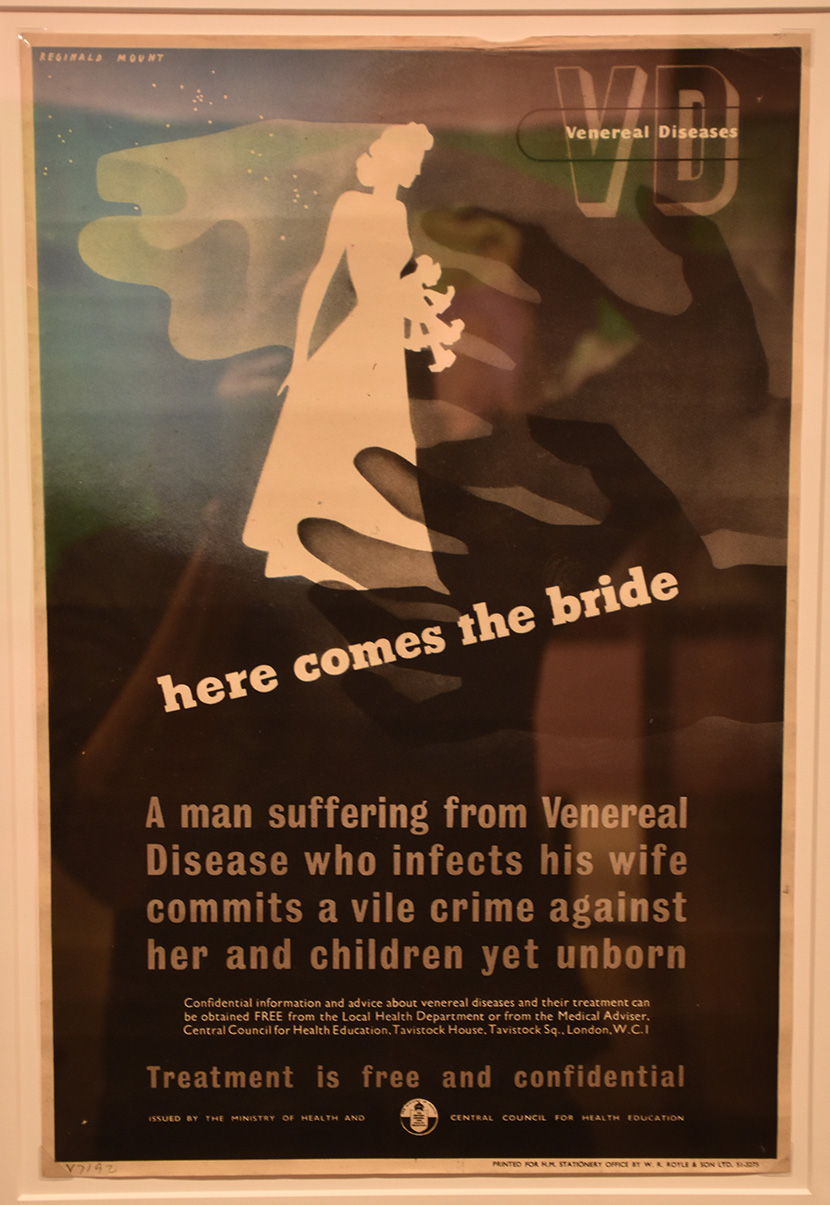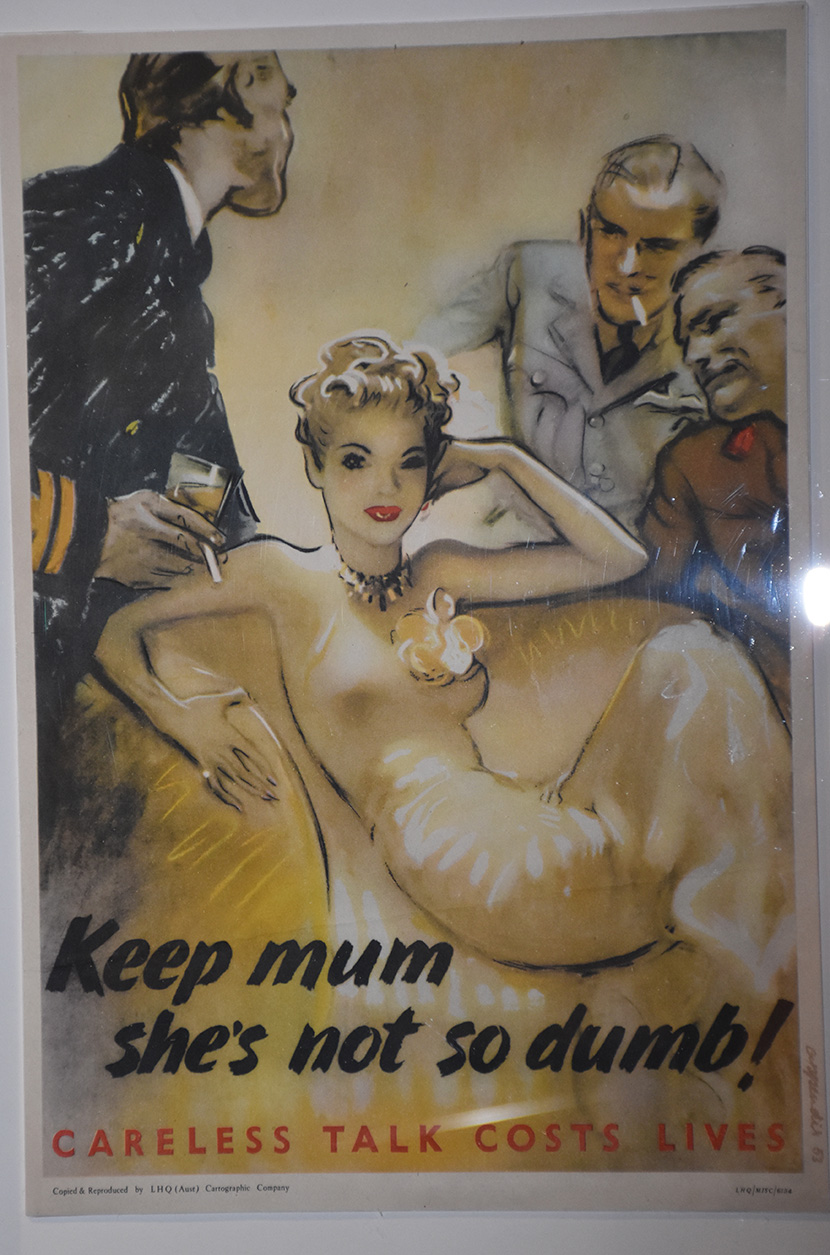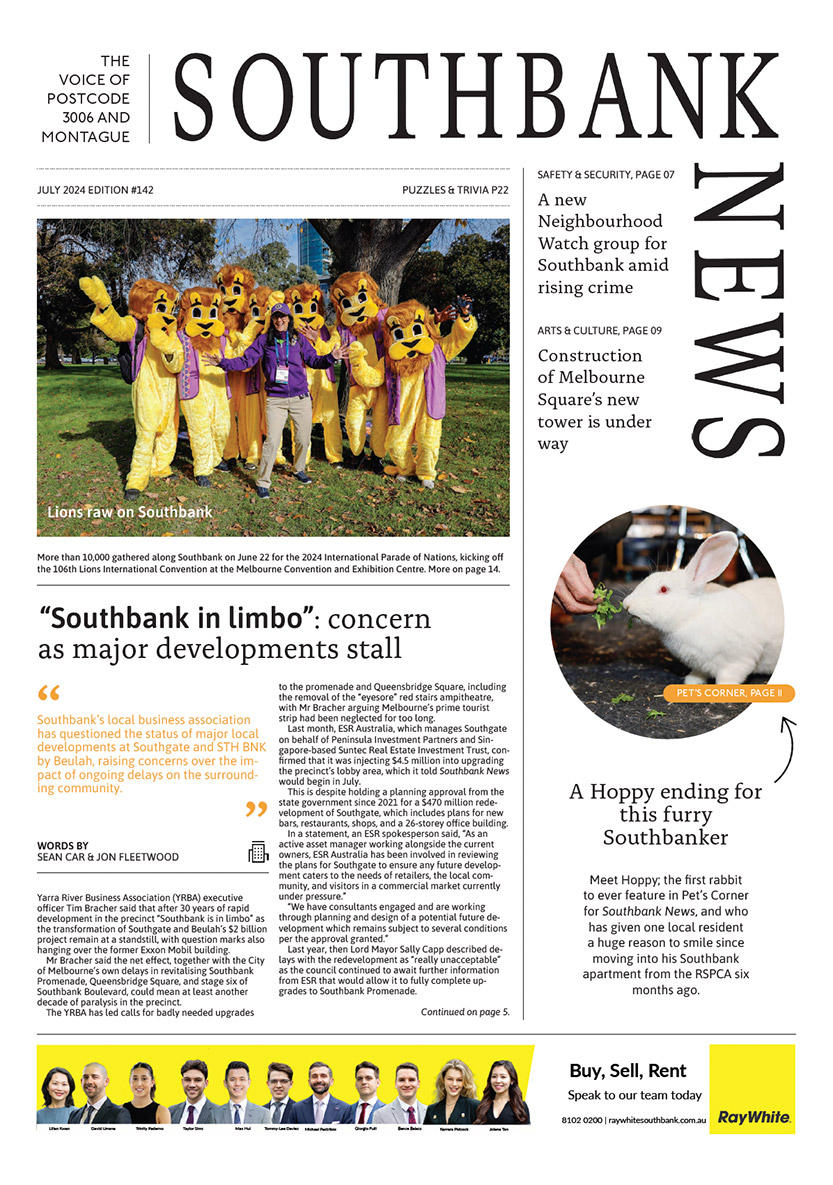Posters tell another story
Lust Love Loss is an exhibition with big themes squeezed into a small space at the Shrine of Remembrance.
Curator Neil Sharkey has done his best to dig out some poignant stories.
There is the one about the young girl from Salonika.
Her dad was executed by the Nazis, so she wrote to an Australian soldier who fought beside him in the partisan forces.
The soldier, Corporal Herbert (Slim) Wigley, was given shelter by her family after he escaped from a prison camp and offered to marry the girl.
Her name was Xanthoula Papadopoulos and in 1951 she arrived in Melbourne on a migrant ship.
A reporter from The Age was there to record the happy reunion in Here to Wed Man She Hid from Enemy. The couple hadn’t seen each other for seven years but soon they were chatting, the article reported.
Other tales in this exhibition of artifacts, photographs and art works are not quite as heart-warming as that of Slim and Xan who went on to a long and happy marriage.
Venereal diseases (VD) were rife in the First World War and soldiers actively sought infection to keep them away from the front.
The irritating chemicals in the cures were off-putting and the army resorted to some pretty heavy-handed messaging to get the soldiers to comply.
A poster called Here comes the bride accused sufferers of committing a “vile crime” against their wives and children.
Women were targeted as well by the authorities. A poster Keep mum she’s not dumb is aimed at stopping careless talk by throwing suspicion on women as potential spies.
Gender stereotyping was as rife as VD, even in the soldiers’ own sketches such as one on display by Lieutenant Fred Ransome Smith in the form of a Christmas card.
The sketch depicts Fred and his friend Walter thrown together in a prison camp and embracing but in the background are their normative sweethearts proving they are still manly.
The exhibition is quite daring in its exposé of these patriarchal values, which at close quarters have a logic, but when added up spell out a life of suffering for soldiers who had little chance of finding love.
Armed forces have always exploited notions of masculinity and femininity, the exhibition concludes.
If you weren’t a hero at war, then you’d probably be overlooked on your return was one of the fears used in the poster “Were YOU there then?” to manipulate behaviour.
These exhortations to conform stand out among the more conventional depictions of men and women embracing on the docks.
It wasn’t until the 2013 Mardi Gras that LGBTI+ Australian Defence Force personnel were finally allowed to march in uniform.
Lust Love Loss, Shrine of Remembrance, until November 1 •

Sally Capp: one last chat as Lord Mayor of Melbourne








 Download the Latest Edition
Download the Latest Edition